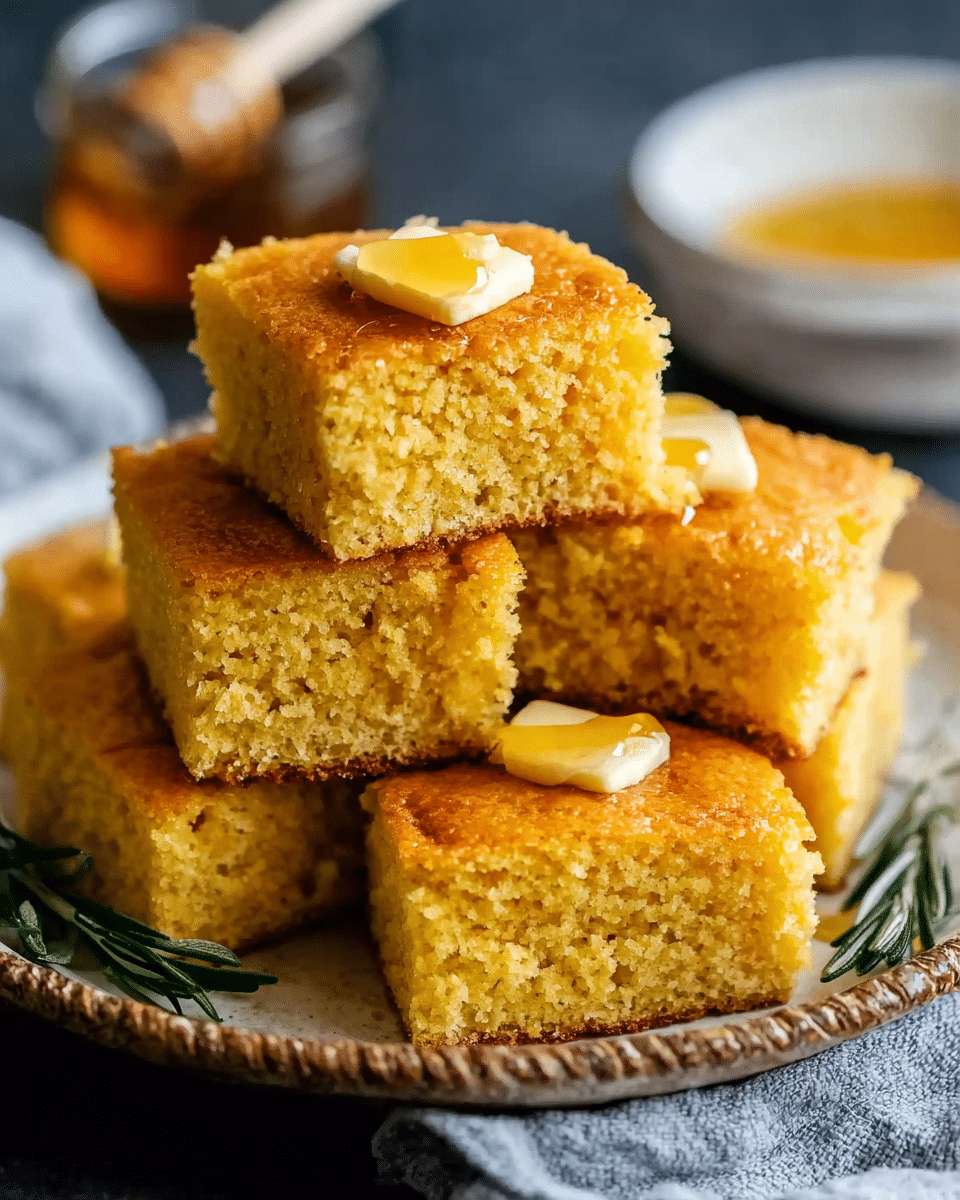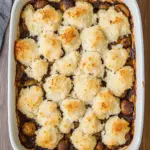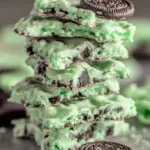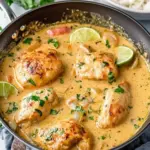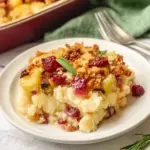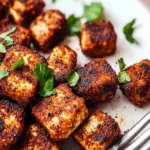This classic buttermilk cornbread is light, fluffy, and packed with flavor. The combination of cornmeal and all-purpose flour creates a perfect texture, while the buttermilk and butter keep it moist. The optional honey adds a touch of sweetness, making this cornbread a delicious side dish for soups, stews, or barbecue meals.
Full Recipe:
Ingredients
-
1 cup cornmeal
-
1 cup all-purpose flour
-
1/4 cup sugar
-
1 tablespoon baking powder
-
1/2 teaspoon salt
-
1/2 teaspoon baking soda
-
1 cup buttermilk
-
1/2 cup milk
-
1/4 cup melted butter
-
1 large egg
-
2 tablespoons honey (optional)
Directions
-
Preheat oven to 400°F (200°C) and grease a 9×9-inch baking pan or line with parchment paper.
-
In a large bowl, whisk together cornmeal, flour, sugar, baking powder, salt, and baking soda.
-
In a separate bowl, whisk together buttermilk, milk, melted butter, and egg until smooth. Optionally, add honey for extra sweetness.
-
Pour the wet ingredients into the dry ingredients and stir until just combined. Do not overmix.
-
Pour the batter into the prepared baking pan and spread it out evenly.
-
Bake for 20-25 minutes, or until the top is golden brown, and a toothpick inserted into the center comes out clean.
-
Allow to cool for a few minutes before cutting into squares.
Nutrients
-
Calories: Varies depending on serving size
-
Servings: 9-12 squares
Why Buttermilk?
Buttermilk is one of the key ingredients that give this cornbread its signature texture and flavor. When used in baking, buttermilk reacts with the leavening agents, like baking powder and baking soda, to create a light and airy crumb. The acidity in buttermilk helps to activate these leavening agents, resulting in a fluffy and tender cornbread. Additionally, buttermilk adds a subtle tang that balances the sweetness of the sugar and honey, creating a more complex flavor profile.
Buttermilk is also known for its ability to keep baked goods moist. The richness of buttermilk, combined with the melted butter in this recipe, ensures that the cornbread doesn’t dry out. This is particularly important because cornbread can sometimes be prone to a dry texture, but the buttermilk helps keep it soft and tender, even after it has cooled.
The Perfect Balance of Cornmeal and Flour
One of the defining characteristics of classic cornbread is the balance between cornmeal and flour. The cornmeal provides the signature grainy texture and earthy flavor that is at the heart of cornbread. Cornmeal is made from ground dried corn, and its slightly sweet, nutty flavor adds a rustic, hearty quality to the bread.
However, cornmeal alone can create a dense texture, which is why all-purpose flour is used in combination with it. The flour adds structure and lightness to the cornbread, preventing it from becoming too crumbly or dense. The combination of cornmeal and flour in equal measure ensures that the cornbread has just the right texture—moist, light, and a little crumbly, without being dry or too heavy.
The Role of Leavening Agents
To achieve the desired light and fluffy texture, leavening agents such as baking powder and baking soda are essential. Baking powder is a chemical leavening agent that helps the batter rise as it bakes. It releases carbon dioxide when it reacts with the buttermilk, causing the batter to expand and become airy. Baking soda, on the other hand, also reacts with the acidic buttermilk to help the cornbread rise, while also contributing to the browning of the top crust.
The correct ratio of baking powder to baking soda is important in achieving the ideal texture. Too much baking powder could lead to a cakey cornbread, while too much baking soda can cause the cornbread to have a bitter taste. In this recipe, the balance of both ensures that the cornbread rises properly and bakes to a light, tender consistency.
The Secret to Moist, Flavorful Cornbread
One of the most important factors in making great buttermilk cornbread is ensuring that it stays moist. In addition to the buttermilk, the melted butter in this recipe contributes to the overall richness and moisture of the cornbread. Butter not only helps with moisture, but it also adds a rich, savory flavor that enhances the cornbread’s overall taste.
The use of both milk and buttermilk provides a perfect balance of moisture. While buttermilk adds acidity and tang, the regular milk helps to mellow the flavor and keep the cornbread soft. This combination ensures that the cornbread will have the perfect texture—soft, moist, and tender—without becoming too greasy or heavy.
Optional Sweetness: Honey in Cornbread
While cornbread is traditionally savory, the addition of honey is a simple way to add a touch of sweetness. Some prefer cornbread with a hint of sweetness, and honey provides just that. The gentle sweetness of honey balances the slight tang from the buttermilk and complements the earthiness of the cornmeal.
Honey is also a natural sweetener, and its flavor is more complex than regular sugar. Its floral notes can enhance the flavor of the cornbread without overwhelming it, making it a perfect addition for those who enjoy a slightly sweet cornbread. If you prefer a more traditional, savory cornbread, you can skip the honey altogether, as the cornbread will still be delicious with its naturally nutty and slightly sweet flavor from the cornmeal alone.
Baking the Perfect Cornbread
Baking cornbread is straightforward, but a few tips can help ensure that it turns out perfectly every time. First, it’s important to preheat the oven to the right temperature—400°F (200°C) is ideal for achieving the perfect golden-brown crust. The hot oven helps to create a nice rise and ensures that the top of the cornbread becomes slightly crisp while the inside remains soft and fluffy.
Additionally, greasing the baking pan or lining it with parchment paper is essential for preventing the cornbread from sticking. A 9×9-inch square pan works well for this recipe, allowing the cornbread to bake evenly. If you prefer, you can use a cast-iron skillet for an extra-crispy crust, which is a popular choice in Southern cornbread recipes.
It’s important not to overmix the batter once the wet and dry ingredients are combined. Overmixing can lead to dense cornbread, so stir the mixture until just combined. A few lumps in the batter are perfectly fine.
Serving Cornbread: A Versatile Side Dish
Classic buttermilk cornbread is a versatile side dish that pairs wonderfully with many different types of meals. One of the most popular ways to enjoy cornbread is by serving it alongside soups, stews, or chili. The cornbread’s light and fluffy texture makes it ideal for soaking up the rich, flavorful broths of these dishes. Whether it’s a hearty bowl of vegetable soup, a spicy chili, or a comforting beef stew, cornbread is the perfect accompaniment to absorb all the delicious flavors.
Cornbread also pairs beautifully with barbecue meals. Its slightly sweet flavor contrasts with the smoky, tangy notes of grilled meats, and it helps balance the richness of barbecued pork, chicken, or ribs. It’s also a great addition to any family dinner, especially when served with roasted vegetables or a crisp green salad.
Storing and Reheating Cornbread
Cornbread is best served fresh out of the oven, but it can be stored for later use. Allow the cornbread to cool completely before wrapping it in plastic wrap or storing it in an airtight container. It can be kept at room temperature for a few days or stored in the refrigerator for up to a week. To reheat, simply place the cornbread in a 350°F (175°C) oven for 10-15 minutes, or microwave individual pieces for about 20-30 seconds.
For an extra treat, you can even serve leftover cornbread with a drizzle of honey or a pat of butter to enhance its flavor. Some people even enjoy cornbread toasted with a bit of butter for breakfast the next day.
Conclusion
In conclusion, classic buttermilk cornbread is a simple yet delicious side dish that can complement a wide variety of meals. With its light, fluffy texture, slightly sweet flavor, and moist crumb, this cornbread is perfect for soaking up hearty soups, stews, or barbecue sauces. The combination of cornmeal, flour, buttermilk, and butter creates a balance of flavor and texture that has made cornbread a staple in many kitchens for generations. Whether you prefer it with a touch of honey or without, this recipe delivers a comforting, flavorful cornbread that’s perfect for any occasion. Whether you serve it for a weeknight dinner or as part of a larger feast, this cornbread is sure to satisfy.

